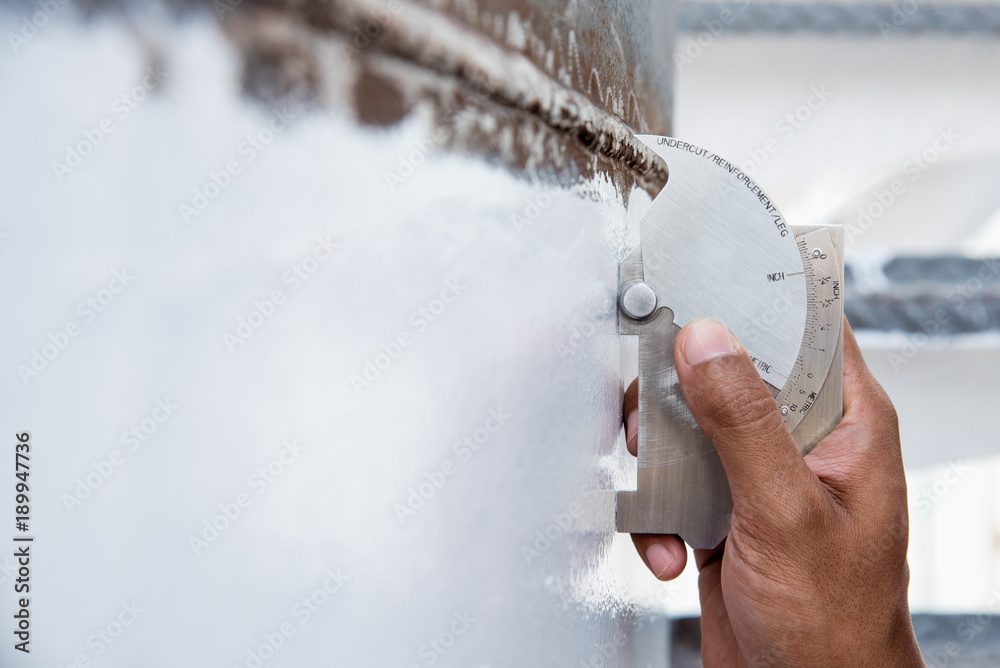Exactly How Tank Welding Inspection Avoids Future Structural Failures
A Thorough Summary of Storage Tank Welding Inspection Specifications and Methodologies for Improved Weld Quality and Efficiency
The significance of welding assessment standards in the manufacturing of tanks can not be overemphasized, as they offer as the foundation for making certain weld integrity and operational dependability. Various inspection strategies, consisting of aesthetic assessments and advanced non-destructive testing methods, are critical in identifying prospective problems that can compromise efficiency.
Significance of Welding Inspection Requirements

Welding inspection criteria encompass a variety of criteria, including product requirements, welding treatments, and certifications of workers involved in the welding process. By applying these requirements, organizations can methodically recognize and correct possible problems, consequently decreasing the likelihood of pricey repair services or devastating failings. Moreover, rigorous examination methods promote a society of accountability and accuracy, motivating welders to maintain high degrees of craftsmanship.

Common Welding Assessment Strategies


Ultrasonic Examining (UT) is an additional widespread method, using high-frequency acoustic waves to spot interior problems that may not show up externally. This method is particularly reliable for determining gaps or incorporations within the weld steel. Magnetic Particle Testing (MT) is additionally extensively made use of, especially for ferromagnetic materials, as it exposes surface area and near-surface flaws with the application of magnetic fields and ferrous bits.
In Addition, Liquid Penetrant Screening (PT) spots surface-breaking defects by using a penetrant to the weld and then using a programmer to extract the penetrant. Each of these techniques adds to an extensive inspection approach, making sure that welds meet the check my source rigorous high quality standards called for in storage tank construction.
Governing Specifications and Compliance
Governing requirements and compliance are necessary components in making certain the security and integrity of bonded structures in storage tank construction - Tank Welding Inspection. These criteria serve to develop minimum demands for product homes, welding treatments, and evaluation techniques, thus lowering the risk of architectural failings and enhancing general efficiency
Secret companies, such as the American Society of Mechanical Engineers (ASME) and the American Welding Society (AWS), give standards that are commonly taken on in the industry. Compliance with these criteria not only guarantees adherence to ideal methods yet also satisfies legal and contractual responsibilities, guarding the interests of stakeholders.
Regulative bodies usually mandate adherence to specific codes, such as ASME Code Section IX for welding certifications and API 650 for welded containers. These codes detail demands for welding strategies, certifications of workers, and screening techniques to validate weld honesty.
Regular audits and evaluations are vital to keeping conformity, as they aid recognize deviations from established standards. Non-compliance can lead to considerable charges, task hold-ups, and safety and security risks. Therefore, a robust understanding of regulative requirements and a commitment to compliance are critical in accomplishing top notch and long browse around here lasting bonded storage tank frameworks.
Non-Destructive Examining Approaches
Just how can the honesty of bonded frameworks be ensured without creating damages? Non-destructive screening (NDT) techniques use a robust service, making it possible for assessors to examine weld high quality without jeopardizing the material - Tank Welding Inspection. Among one of the most usual NDT techniques are ultrasonic screening (UT), radiographic screening (RT), magnetic bit testing (MT), and dye penetrant screening (PT)
Radiographic testing entails passing X-rays or gamma rays through the weld, developing pictures that reveal architectural issues such as fractures or spaces. This method is very useful for examining the stability of complex welds.
Magnetic particle testing is fit for ferromagnetic products, where electromagnetic fields reveal surface area and near-surface suspensions. Color penetrant testing makes use of a liquid dye to highlight surface-breaking imperfections, making it an effective approach for non-porous materials.
Each of these NDT methods has distinctive benefits, permitting extensive analyses tailored to certain materials and welding procedures. By implementing these techniques, sectors can ensure the dependability and safety of welded frameworks, inevitably improving general efficiency.
Enhancing Weld Quality With Examination
Effective examination plays an important duty in improving weld quality, working as an important checkpoint in the construction procedure. By recognizing potential problems early, assessments minimize the risk of jeopardized architectural honesty and ensure compliance with industry requirements. Using a mix of aesthetic evaluations, non-destructive testing (NDT) techniques, and mechanical analyses, assessors can spot concerns such as porosity, fractures, and insufficient combination.
Executing a robust assessment procedure not just enhances the general top quality of welds yet additionally cultivates a culture of responsibility among welders and producers. Routine training and accreditation of assessment workers make sure that they are furnished with the needed abilities to acknowledge and attend to prospective troubles properly. This aggressive technique lessens rework and connected expenses, ultimately contributing to predict performance.
Moreover, detailed paperwork of evaluation searchings for supplies useful insights into reoccuring problems, assisting in continuous improvement in welding techniques. By leveraging sophisticated modern technologies, such as automated ultrasonic screening or digital radiography, weld quality can be boosted with much more precise analyses. In final thought, YOURURL.com a rigorous assessment procedure is vital in accomplishing top quality welds, ensuring safety and security, reliability, and long life in tank manufacture.
Final Thought
Finally, the application of rigorous container welding evaluation criteria and methodologies is important for guaranteeing weld stability and performance. By making use of a combination of visual examinations, non-destructive testing techniques, and adherence to governing standards, companies can effectively determine and mitigate possible defects. Cultivating a culture of responsibility amongst welders even more boosts the quality of welding processes. Inevitably, these practices add to lowered structural failings, reduced repair work prices, and improved operational performance within the industry.